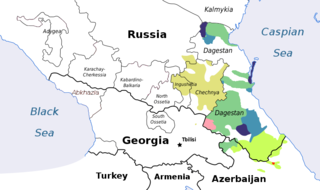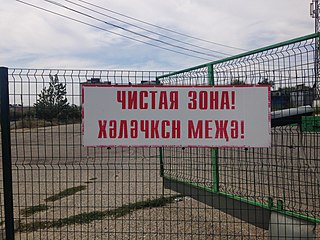
Kalmyk Oirat, commonly known as the Kalmyk language, is a variety of the Oirat language, natively spoken by the Kalmyk people of Kalmykia, a federal subject of Russia. In Russia, it is the standard form of the Oirat language, which belongs to the Mongolic language family. The Kalmyk people of the Northwest Caspian Sea of Russia claim descent from the Oirats from Eurasia, who have also historically settled in Mongolia and Northwest China. According to UNESCO, the language is "Definitely endangered". According to the Russian census of 2021, there are 110,000 speakers of an ethnic population consisting of 178,000 people.
Shor is a critically endangered Turkic language spoken by about 2,800 people in a region called Mountain Shoriya, in the Kemerovo Province in Southwest Siberia, although the entire Shor population in this area is over 12000 people. Presently, not all ethnic Shors speak Shor and the language suffered a decline from the late 1930s to the early 1980s. During this period the Shor language was neither written nor taught in schools. However, since the 1980s and 1990s there has been a Shor language revival. The language is now taught at the Novokuznetsk branch of the Kemerovo State University.

Julian Alexandrovich Scriabin was a Swiss-born Russian composer and pianist who was the youngest son of Alexander Scriabin and Tatiana de Schloezer.
Oleg Nikolayevich Trubachyov was a Russian linguist. A researcher of the etymology of Slavic languages and Slavic onomastics, he was considered a specialist in historical linguistics and lexicography. He was a Doctor of Sciences in Philological Sciences, an academician of the Russian Academy of Sciences and served as the editor-in-chief of the Etimologiya yearbook. His works are on the etymology of Slavic languages and on East Slavic onomastics.

There are 4 stages in the history of Yakut writing systems:
Apudessive case is used for marking a juxtaposing spatial relation, or location next to something. It is found in Tsez, Bezhta and other Northeast Caucasian languages. The name “Apudessive” derives from the Latin word apud, meaning “at” or “by.”
Dargwa is a Northeast Caucasian language spoken by the Dargin people in the Russian republic Dagestan. It is the literary and main dialect of the dialect continuum constituting the Dargin languages.
Alexander Petrovich Kotsubinsky is a Russian psychiatrist, a spokesman of St. Petersburg psychiatric school.

The Etymological Dictionary of Slavic Languages: Proto-Slavic Lexical Stock is an etymological dictionary of the reconstructed Proto-Slavic lexicon. It has been continuously published since 1974 until present, in 43 volumes, making it one of the most comprehensive in the world.
Simbirsk Chuvash teacher's school is the training center for the creative intelligentsia of the Chuvash and other peoples of the Volga region. Center founded educator of Chuvash people I. Y. Yakovlev, October 28, 1868 in Simbirsk, the administrative center of the homonymous province.

Yuriy Ivanovich Semenov was a Soviet and Russian historian, philosopher, ethnologist, anthropologist, expert on the history of philosophy, history of primitive society, and the theory of knowledge. He was also the original creator of the globally-formation (relay-stadial) concept of world history and is a Doctor of Philosophy, Doctor of Historical Sciences (1963), and Professor. He was Distinguished Professor at the Moscow Institute of Physics and Technology.
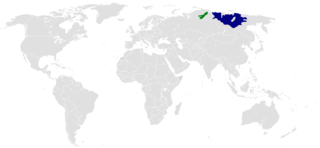
The Dolgan language is a critically endangered Turkic language with 930 speakers, spoken in the Taymyr Peninsula in Russia. The speakers are known as the Dolgans. The word "Dolgan" means 'tribe living on the middle reaches of the river'. This is most likely signifying the geographical location of the Dolgan tribe. Its closest relative is Sakha.
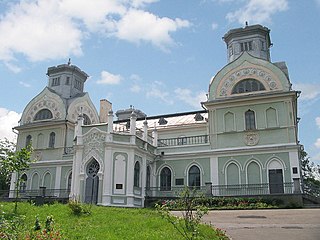
The Lopukhin family was a noble family of the Russian Empire, forming one of the branches of the Sorokoumov-Glebov family.
Mark Mendelevich Persits was a Soviet propagandist of atheism, a scientific worker in the study of problems of religion and atheism, a writer, and a historian of social thought.
The Komi language, a Uralic language spoken in the north-eastern part of European Russia, has been written in several different alphabets. Currently, Komi writing uses letters from the Cyrillic script. There have been five distinct stages in the history of Komi writing:
Since its inception in the 18th century and up to the present, it is based on the Cyrillic alphabet to write the Udmurt language. Attempts were also made to use the Latin alphabet to write the Udmurt language. In its modern form, the Udmurt alphabet was approved in 1937.
Kalenyk Vasyliovych Sheikovskyi was a Ukrainian linguist, ethnographer, publisher, teacher.
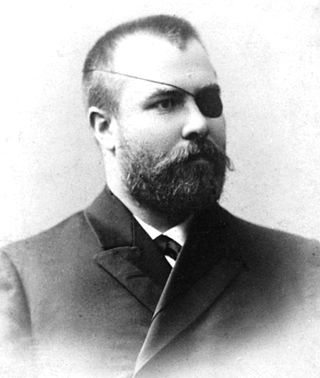
Matvey Kuzmich Lyubavsky was a Russian and Soviet historian, professor, academic and rector of the Moscow University from 1911 to 1917.
Khakass alphabets are the alphabets used to write the Khakas language.
Udege alphabets are the alphabets used to write the Udege language. During its existence, it functioned on different graphic bases and was repeatedly reformed. Currently, the Udege script functions on two versions of the Cyrillic alphabet for two emerging literary languages, but does not have a generally accepted norm. There are 2 stages in the history of Udege writing:
